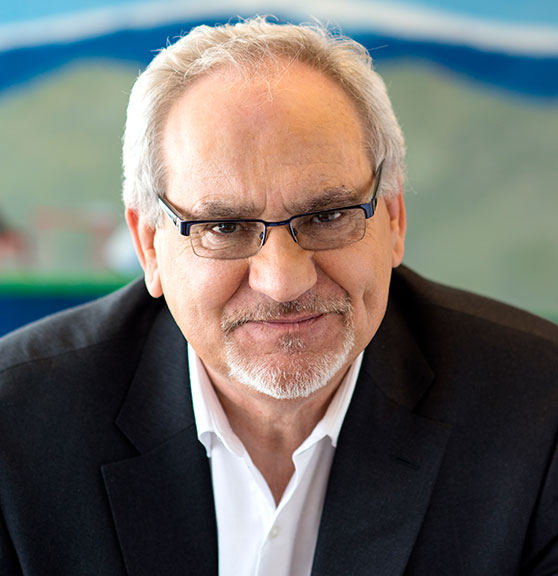By Philippe Le Houérou
Before Africa can reach the uplands of digitization — the robotics and the AI — it must first do the hard slog of reforming telecoms markets and opening up to competition, argues the outgoing head of the IFC. In a COVID19-treatment facility in Rwanda, Akazuba, Ikizere and Ngabo are moving through the hallways relaying doctor’s messages and delivering blood samples.

The three health workers are not at risk of infection. They are robots. Meanwhile, Babyl, a chatbot, triages first medical problems and schedules physician appointments for 30 percent of the population. In Rwanda, digital technologies have become literal life savers.
Such inspiring examples, which are found across many sectors and countries in Africa, offer a glimpse into the profound development potential of digitization. A number of reports highlight (correctly) that a bright future awaits when vibrant digital business models permeate throughout economies to create new consumer markets; and when frontier technologies – such as AI and 3D printing – reshape entire industries.
The big pot of gold at the end of the path to digitization can lure us into believing that most countries are speedily heading towards it. Many are not. Digitization remains constrained by the poor state of internet connectivity. In sub-Saharan Africa, only 20 percent of the population subscribes to the internet. When people subscribe, they use it sparingly: The average user consumes 300 Megabytes per month, roughly enough for half an hour of video conferencing.
Addressing these constraints has little to do with AI, big data and an army of coders. The first steps to digitization are decidedly unsexy and very analog. Governments need to address vested interests, monopolization and regulatory barriers in connectivity markets to get people connected to the internet.
Fast internet requires a seamless integration of different providers. It travels through undersea cables, landing points, fiber landlines and wireless masts into the phone of the end-user. If one provider in this chain holds too much control, it can hold players downstream hostage to its pricing power and faces few incentives to upgrade its network.
In Africa, until today, monopolistic incumbents, often tightly linked to governments, operate critical infrastructure nodes for fast internet. Both mobile and broadband markets are the most concentrated in terms of ownership.
Even where companies compete, markets are not necessarily open for new entrants: Regulatory capacities to close down on collusive behavior and to enact important enabling regulations – such as granting new competitors open and fair access to existing infrastructure networks – are in many cases insufficient or absent.
Companies may find it attractive to ask for exclusive contracts. But investment that is contingent on adopting anti-competitive practices can end up blocking digital development.
Take a typical country where one government-owned telecommunications company owns all landing stations and has a dominant position in operating the fiber infrastructure. It charges money from retail companies to move their internet traffic through its lines. It is also a retail provider itself, competing with its own customers.
Competitors seeking to change the status quo by building out their own fiber networks have mostly been unable to obtain permits. Despite the country’s abundant connection to international traffic, internet quality is low; an investment backlog in the billions has accumulated.
Consumers pay for this lack of competition: A mobile bundle with 500 Megabytes of data costs on average 16 percent of monthly income, 10 percentage points more than the global average of 6 percent.
Once a bundle has been bought, poor connection limits user experience: 91 percent of the connections in sub-Saharan Africa are 3G or slower. In the face of prohibitive prices, only 2 out of 10 people subscribe to mobile broadband internet despite the fact that 7 out of 10 people are geographically covered by network.
Certainly, digitization requires more than open internet markets. It requires digitally savvy consumers, a workforce that keeps innovating, and entrepreneurial capacities to create new products and services that are relevant for local needs. Those capacities need to develop. But for people to build skills and for entrepreneurship to take advantage of fast connection, people and businesses must be connected in the first place.
The recipe for moving forward is in many ways simple: African governments must aggressively open infrastructure markets for investment; they must break monopolies and shut down rent-seeking behavior. For the complex modern internet value chain, the presence of strong politically independent regulators and competition authorities with the capacity and authority to instill competition is crucial.
Governments have the opportunity to cooperate across borders.
Taking down cross-country communication barriers and opening markets for regional competition, coupled with harmonized regulation and anti-trust prerogatives, can instill a virtuous cycle of investment and lower prices. Moreover, speaking with a common regional voice is the best way to enforce common standards on private companies and prevent them from demanding special treatment.
That the recipes are simple does not make them easy: Entrenched national interests and institutions are hard to break. Immediate revenue from high fees and taxes is hard to sacrifice in favor of future revenue. And conceding authority to regional bodies is unpopular.
First and foremost, the challenge of digitization is one of political will. The will to think bigger, to understand the big pot of gold as a call for taking the unflashy steps now and not as the soothing promise that digitization will happen by itself.
Philippe Le Houérou is the CEO of IFC, a member of the World Bank Group and the largest global development institution focused on the private sector in developing countries.


